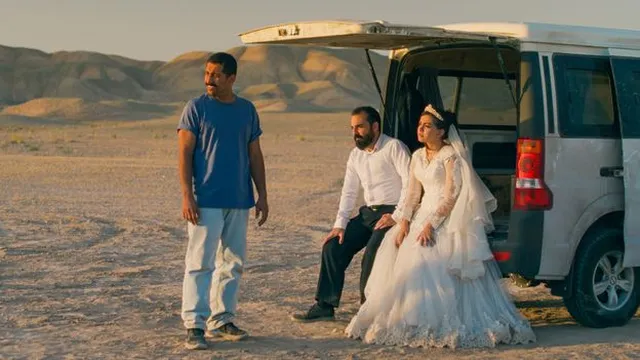
Jafar Panahi attends Cannes after years of absence
2025-05-22 15:23- Jafar Panahi returned to the Cannes Film Festival after a 15-year absence due to a travel ban.
- His film 'It Was Just an Accident' addresses themes of oppression and moral dilemmas surrounding revenge.
- Panahi's presence at Cannes highlights the ongoing struggles of artists facing censorship in oppressive regimes.
Express your sentiment!
Insights
In a prominent display of artistic resilience, Jafar Panahi, an acclaimed Iranian filmmaker, made his return to the Cannes Film Festival after a 15-year absence due to a travel ban originating from his political dissent against the Iranian government. The travel limitations, enforced in 2009 following Panahi’s participation at a protest funeral, barred him from attending the premieres of his films. However, his latest work, a revenge thriller titled 'It Was Just an Accident,' aims at addressing issues of oppression and justice, resonating with viewers amidst ongoing struggles in Iran. The film's narrative follows a character named Vahid who, after enduring years of torture, grapples with the moral implications of vengeance when he believes he has captured his former torturer. The film's underlying themes challenge viewers to consider the thin line between heroism and villainy. Furthermore, Panahi's return to the festival offers not just a personal triumph, but also shines a spotlight on the greater plight of dissident filmmakers who struggle for their voices in oppressive regimes. Beyond the film’s plot, Panahi expressed the significance of the moment, emphasizing that art and creativity can still flourish despite repression. The filmmaker’s presence at Cannes not only symbolizes a reclamation of his artistic freedom but also serves as a reminder of the broader implications of censorship in creative industries. This powerful interaction between art and activism encapsulates Panahi’s journey, urging audiences to reflect on the pressing need for justice and the consequences of political oppression in Iran, especially in light of the country's recent protests sparked by the death of Mahsa Amini. As Panahi continues to create films that defy state control, he remains committed to challenging societal norms and advocating for change through his cinematic stories. His participation in Cannes represents a beacon of hope for those silenced under authoritarian regimes, showcasing cinema as a tool for social commentary and change.
Contexts
Iranian cinema has historically been a complex tapestry, interwoven with cultural expression, artistic innovation, and the intricacies of political repression. Following the 1979 Islamic Revolution, the film industry in Iran faced significant transformation, as the new regime imposed stringent censorship laws and enforced political narratives that aligned with its ideologies. Filmmakers contended with a dual reality, needing to navigate between artistic integrity and the limitations placed by the government, resulting in a cinema that often sought subtle ways to critique societal issues. The ability to tell a story in such a repressive environment led to the emergence of an inventive form of cinema characterized by allegory and metaphor, enabling filmmakers to express dissent without explicitly contradicting state regulations. Despite the pressures of censorship, Iranian filmmakers have embraced the medium as a platform for social commentary and cultural reflection. During the late 20th and early 21st centuries, the works of directors such as Abbas Kiarostami and Asghar Farhadi gained international acclaim, earning recognition for their authentic portrayals of Iranian society. Their films often reflected the struggles of ordinary citizens amidst broader socio-political conflicts, presenting nuanced narratives that resonated with global audiences while subtly critiquing the state's oppressive measures. This balance of storytelling and resistance allowed Iranian cinema to carve a niche that celebrated its uniqueness, all while contending with the chilling effects of state-imposed creativity constraints. The political climate in Iran continues to evolve, yet filmmakers today still grapple with the aftershocks of repression. Recent crackdowns on film productions and increased censorship of content have stifled the industry, pushing some creators to exile or self-impose restrictions on their work. Many filmmakers have also turned to international co-productions, using global partnerships as a means to navigate the complexities of censorship while still reaching audiences within Iran. The rise of digital platforms has presented new opportunities, allowing independent filmmakers to share their stories more widely and connect with audiences beyond Iran's borders, countering the effects of domestic restrictions. Nevertheless, the need for caution and adaptability remains paramount as filmmakers strive to maintain their voice amidst a backdrop of continued oppressive oversight. Looking forward, the future of Iranian cinema hinges on the resiliency of its artists in the face of political repression. The dynamic between creativity and censorship will likely shape the narratives that emerge, as filmmakers continue to innovate in presenting their stories. Advocacy for freedom of expression in the arts is paramount, as it not only impacts the filmmakers but also reflects the collective spirit of a society yearning for authenticity and representation. As international attention on Iranian cinema grows, there is potential for cultural dialogue that transcends borders, fostering a greater understanding of Iran's rich cinematic legacy while simultaneously highlighting the urgent need for reforms in the realm of artistic freedoms.